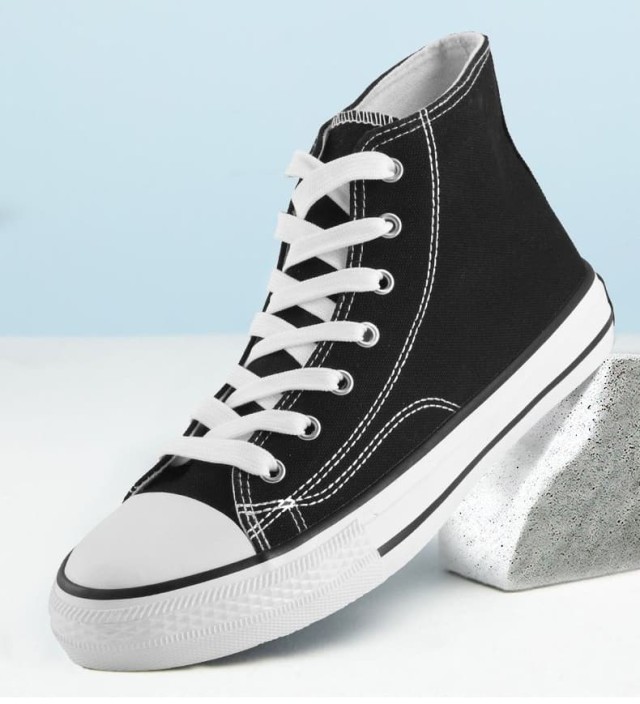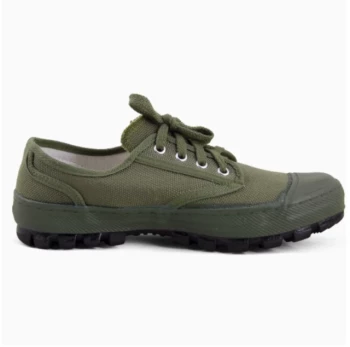For over a century, vulcanized soles have dominated performance footwear—from skate parks to fashion runways. But what makes this 19th-century innovation still outperform modern alternatives? Here’s how sulfur, heat, and craftsmanship create soles that withstand years of abuse while maintaining flexibility.
The Chemistry of Vulcanization
How Sulfur Transforms Rubber
Vulcanization permanently alters rubber’s molecular structure. Natural rubber alone is sticky and deforms easily, but adding 3-5% sulfur under heat creates cross-linking polymers. This process:
- Boosts tensile strength by 8–10× compared to raw rubber
- Reduces plasticity (prevents sole deformation)
- Enhances heat resistance up to 120°C
Lab tests show vulcanized rubber retains elasticity through ~50,000 flex cycles—explaining why brands like Vans use it for high-impact sneakers.
Heat vs. Pressure: Balancing Bond Strength
The autoclave process (120–180°C at 140–350kPa) determines final durability:
| Factor | Low Range Effect | High Range Effect |
|---|---|---|
| Temperature | Weak bonds (faster wear) | Overcured (brittle soles) |
| Pressure | Uneven curing | Optimal cross-linking |
Skate shoe manufacturers often opt for 160°C for 12 minutes—a sweet spot for grip and tear resistance.
From Lab to Sneakers
Iconic Brands Using Vulcanization
- Converse Chuck Taylors: The vulcanized gum sole absorbs shocks while allowing board feel—critical for basketball origins.
- Vans Authentic: Its waffle outsole combines vulcanization’s flexibility with textured grip for skateboarding.
Skateboarding Demands: Flexibility and Grip
Vulcanized soles excel here because:
- Thinner profiles enhance foot-to-board feedback
- Natural rubber content (20–40%) provides stickier traction than pure synthetics
- Lateral flex prevents sole delamination during ollies
A 2023 wear test found vulcanized skate shoes lasted 2× longer than glued cupsole equivalents under sliding friction.
Debunking Myths
Vulcanized vs. Cupsole: When to Choose Which
| Feature | Vulcanized | Cupsole |
|---|---|---|
| Durability | Better for flex resistance | Better for compression |
| Weight | Lighter (200–300g/shoe) | Heavier (400–500g/shoe) |
| Best For | Skateboarding, casual wear | Hiking, industrial boots |
Tip: Bulk buyers like 3515 often customize sole compounds—adding carbon black for abrasion resistance in work boots.
Environmental Trade-offs and Innovations
While vulcanization waste is challenging to recycle due to sulfur content, brands are testing:
- Devulcanization tech to break sulfur bonds for material reuse
- Bio-based accelerators (e.g., guayule resin) to replace synthetic additives
Step Into Longevity
For distributors and brands seeking durable soles, 3515’s vulcanization expertise ensures footwear that balances performance with cost-efficiency. Let’s engineer soles that keep pace with your customers’ demands—contact our team to discuss scalable solutions.
Related Products
- Wholesale High-Traction Camo Boots - Custom Manufacturer for Brands
- Durable Rubber-Soled Utility Shoes for Wholesale & Custom Brand Manufacturing
- Wholesale Durable Camo Canvas Shoes with High-Traction Rubber Soles
- Durable Canvas Work Shoes with Rubber Lug Sole | Wholesale Manufacturer
- Durable Rubber Sole Outdoor Shoes Wholesale & Custom Manufacturing
Related Articles
- How Vulcanized Soles Fall Short—And When to Choose Alternatives
- Why Vulcanized Soles Dominate Performance Footwear: Durability Meets Flexibility
- Why Vulcanized Soles Dominate Technical Skateboarding: A Science and Performance Breakdown
- How Vulcanized Rubber Boots Outperform Standard Footwear: Science and Practical Benefits
- From Battlefield to Streetwear: The Dual Identity of Military Camouflage Boots



















